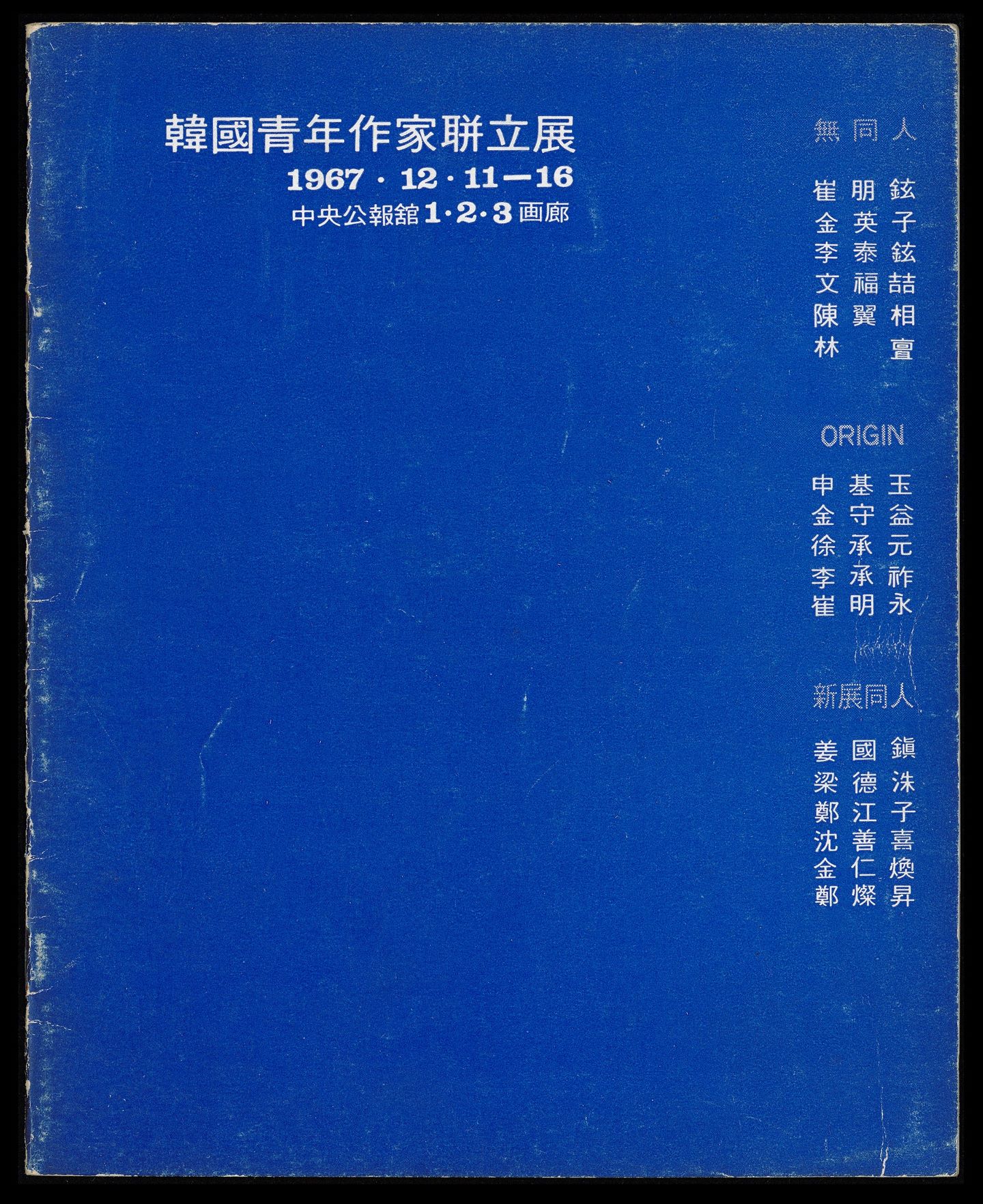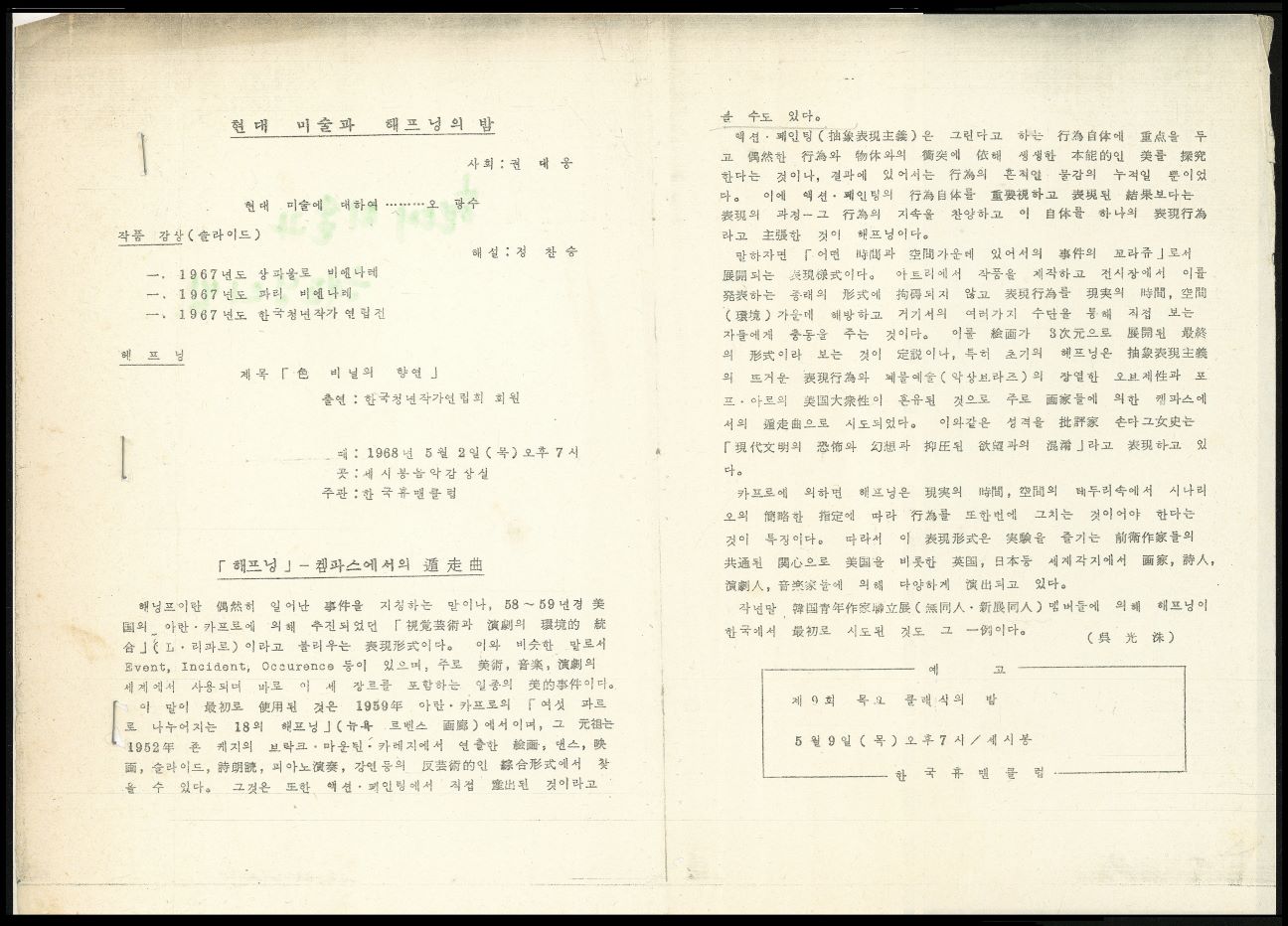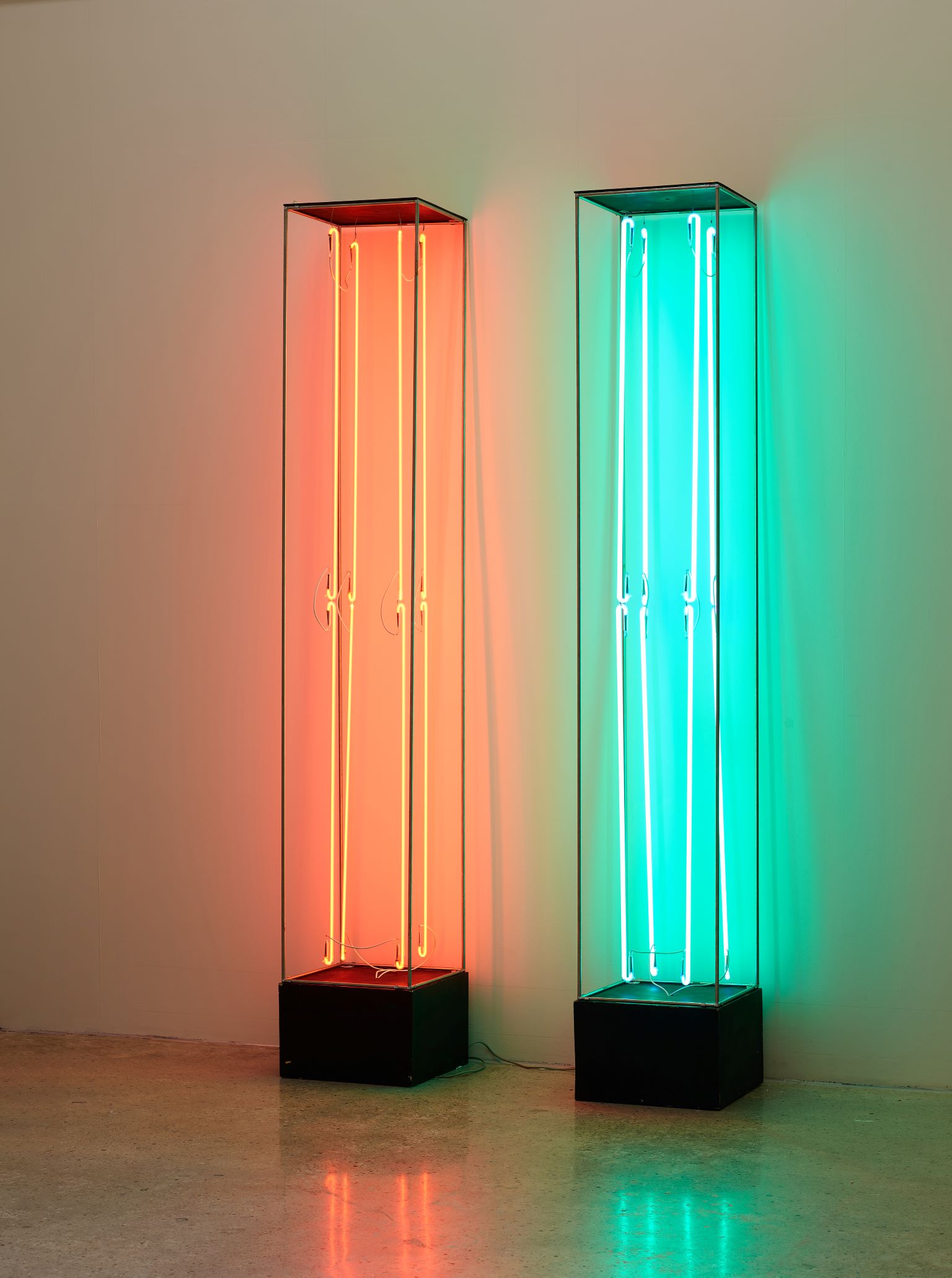
Union Exhibition of Korean Young Artists, Brochure, 1967, MMCA Art Research Center Collection
Union Exhibition of Korean Young Artists
* Source: Multilingual Glossary of Korean Art. Korea Arts Management Service
Related
-

Zero Group
An experimental art group formed in 1962 by nine students in Seoul. The founding members were Kim Youngnam, Kim Youngja, Moon Bokcheol, Seok Ranhi, Lee Taehyun, Choi Boonghyun, and Hwang Ilji, who were painting majors in Hongik University; Seol Yeongjo, an architecture major at Hongik University; and Kim Sangyeong, a painting major at Seoul National University. The group disbanded following its second exhibition in 1967. Over its operation, the group drew attention from critics for its bold experimentation despite the repressive political and social atmosphere of 1960s South Korea.
-

Origin Fine Arts Association
The Origin Society was an art group founded by abstract artists who studied at Hongik University, including Kwon Youngwoo, Kim Sooik, Kim Taekhwa, Suh Seungwon, Shin Kiock, Lee Sangrak, Lee Seungjio, and Choi Myoungyoung. Criticizing the critically dominant Art Informel movement in Korea, the group attempted to explore the use of geometric forms as the fundamental basis for their art, and claimed that only their work represented the true avant-garde tradition. They held their first exhibition at the Korean Information Service Gallery in September 1963. Geometrical abstraction remained the distinctive feature of the group until its tenth exhibition in 1974, however, due to disagreements about the conceptual orientation of the group, the Origin Society was disbanded and re-established with a new name Origin II in 1975. By the late 1970s Dansaekhwa paintings were the dominant style of the group.
-

Sinjeon Group
An art organization formed in 1967 by alumni of Hongik University. Chung Chanseung and Kim Inwhan were previously members of Non Col, a group formed in 1962. Their work was characterized by Informel, but after Nonkkol disbanded due to differences in opinion within the membership, the two formed the Sinjeon Group alongside Kang Kukjin, Yang Deoksu, Shim Sunhee, and Jung Kangja, and they participated in the Union Exhibition of Korean Young Artists. The Sinjeon Group, in its departure from Informel, engaged in experimental work such as objet art, installations, and happenings.
Find More
-

Korean Information Service Gallery
A gallery established in 1957 in Sogong-dong, Seoul. The parent organization of the gallery was the Office of Public Information. The gallery moved to a temporary building in the Northeast section of Deokusung in 1968. The Korean Information Service Gallery was originally a facility where a diverse range of exhibitions including art, crafts, and photography could be held for free, but changes in the Korean Information Service’s policy led the building to be used only for the promotion of government policies starting in April 1972. When the National Museum of Modern Art, Korea (now MMCA) moved to Deosukung Palace in 1973, this branch of the National Museum assumed the role of the Korean Information Service Gallery.
-

A Night of Contemporary Art and Happenings
A Night of Contemporary Art and Happenings was an art event held on May 2 in 1968 by all members of the Sinjeon Group and some members of the Zero Group, who presented happenings for the first time in Korea at the Union Exhibition of Korean Young Artists in December 1967. Before the Union Exhibition of Korean Young Artists, they formed a group called the Union of Korean Young Artists and held its first seminar on November 15 in 1967. Starting on February 19 in 1968 after the Exhibition, they devoted themselves to raising public interest in avant-garde art by holding lecture tours in local provinces. At A Night of Contemporary Art and Happenings, Chung Chanseung spoke about the trends of artworks in the Paris Biennale and the São Paulo Biennale held in 1967. Oh Kwang-su, an art critic who wrote a scenario for Happening with Vinyl Umbrella and Candles (1967), introduced in detail the art historical significance of Western action painting, happenings by Allan Kaprow, and the oeuvre of John Cage. In his essay “The Claim of Happening Art” written in 1968, Oh had already defined the happening as a form of expression seeking the environmental integration of visual art and theater, which was promoted by Kaprow in the late 1950s under the influence of American action painting and John Cage’s avant-garde music. As a result of publicity efforts by critics and young artists, the happening Transparent Balloon and Nude was staged at the C’est Si Bon music hall in the Gwanghwamun Gate area on May 30, 1968, soon after the event, “A Night of Contemporary Art and Happenings.” On October 12 of the same year, another happening, Murder at the Han Riverside, was presented by Kang Kukjin, Jung Kangja, and Chung Chanseung under the Second Hangang Bridge.
-

Experimental art
A genre of Korean art characterized by non-two-dimensional work such as sculpture, environmental installation and performance that emerged in the late 1960s and continued over the course of the 1970s. Art historian Kim Mikyung has analyzed the movement in the context of the political and social phenomena of the time and first coined the term experimental art to describe such work.






